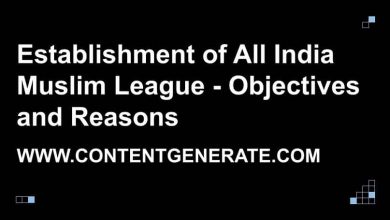Reforms of Pervez Musharraf and Their Impact on Economy

This article discusses the economic reforms of General Musharraf i.e. Foreign Direct Investment (FDI), encouragement towards the production of value-added products, and privatization and their impact on the country.
Contents
What is Foreign direct investment (FDI)?
The term Foreign Direct Investment refers to the investment made by an individual, group of individuals or a corporation in a business in another country. FDI is usually manifested by participation in management, joint ventures, transfer of technology, and management skills.
What were Musharraf’s reforms and their impact on the economy?
Reforms of General Musharraf and their impact are as follows:
1. Foreign Direct Investment
Former president Pervaiz and military ruler General Musharraf introduced Economic Regulations Program (ERP) in the country. Under this program, the Government introduced a sharp reduction in export and import duties (taxes). The program aimed at encouraging international trade and foreign direct investment. The government removed import quotas, surcharges, and duties in the name of the regulation.
Under this program, the country saw a reduction in maximum export tariff rates in 2005 on items i.e. cement, sugar, livestock, vegetables. Similarly. the government lifted the strict licensing conditions previously set for starting a new business in the country.
Impact
Moreover, Government also abolished the public sector monopolies on imports to encourage the private sector in imports. Musharraf government also provided security and land on lease to international firms operating and willing to operate in the country.
Pakistan had received more than five billion dollars in 2007 and witnessed a record increase in its foreign reserves. It helped improve the balance of payment (Trade deficit).
2. Privatization and production of value-added products
Privatization and industrialization were on top of the reforms of General Musharraf. The military government provided exemption in export duties and allotted land around Port Qasim for industrialization. The bonus for those who manufactured more and more value-added export goods. As a result, the industrialists and manufacturers established an increasing number of major Industrial estates in the country i.e. M3 industrial state, Sundar industrial estate, Chakri industrial state near Bin Qasim port.
Impact (Promotion of industrialization and improvement in the trade deficit)
As a result of the government’s efforts towards the promotion of industrialization, the country witnessed an increase in commerce and business activities which in return created employment opportunities. Pakistan was the third fastest-growing economy after China and India. Moreover, the country witnessed a collection of Rs.1.002 Billion in Revenue in 2007-08.
Another positive impact of Musharaf’s reforms was an improvement in the trade deficit. It in turn had a positive impact on the overall economy as represented by the facts and figures given below:
- According to the Economic Survey 2005, almost 11% poverty reduction was observed between 2001 and 2005.
- There was an unprecedented increase in the per capita income which stood at a record-high of $1000 in 2007.
- The industrial growth of 26 % and a historic rise of 100% were observed in tax collection.
- Exports increased textiles and industrial goods affecting the balance of trade in a positive way.
3. Reforms in Education
Musharaf increased the education budget to 4% of the GDP. English was introduced as a compulsory subject from Grade-1 which was used to be a compulsory subject from Grade 6 onward previously.
The government established 9 engineering universities of the international standard. Musharraf had upgraded many of them from college to university status. The number of universities in 2000 was only 30 which increased to 49 in 2005. In total, Musharraf added almost 1 lac new educational institutions to the education system during the Musharraf era.
Impact (Rise in literacy and promotion of research)
There was a considerable rise in Literacy which increased from 45% in 2002 to 53% in 2005.
Musharraf sponsored more than five thousand Pakistanis to pursue doctorate programs in different countries. The number of people doing doctorates degree was only two hundred in 1999 but after 2000 there were three hundred Pakistanis on average doing Ph.D. degrees every year.
4. Improvement in irrigation
Musharaf took important measures to better the irrigation system of Pakistan. In this regard, he built five dams i.e. Mirani, Subakzai, Gomalzam, Khurram, Tangi dams.
Impact (Redressal of water shortage issue)
The military regime of Musharraf addressed issues related to water shortage to a greater extent. He built new dams and barrages to improve irrigation facilitation in the country.
5. Improvement in Transportation
Musharaf undertook an ambitious program of laying a network of highways and motorways in the country. Seven motorways were completed during his regime and many were still under construction when he was transferring power to the new government.
Musharaf started developing Gwadar Port with help of China. He completed a major part of the port at a time when he was in the final days of his presidency. He did not leave it for the next government, he rather completed a major part of the project before his resignation as president.
Impact (Improved transport system)
The military regime of General Pervez Musharraf improved the transportation system. The improved transportation infrastructure resulted in travel time and transportation costs. Moreover, it resulted in enhanced commerce and business activities in the country.



